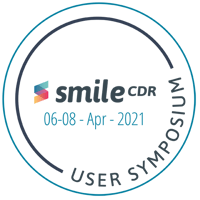


Get connected. The future of health data is is here!
Gain Insights From These Industry Leaders
Join us for 3-days of expertise, insight sharing, training, networking, and fun.
Speakers
- Amar Gurivireddygari
- Aneesh Chopra
- Bo Dagnall
- Bryn Rhodes
- Clem McDonald
- David Houlding
- Deep Shah
- Deepa Madhavan
- Diederik Muylwyk
- Duncan Weatherston
- James Agnew
- Jan Oldenburg
- Ken Stevens
- Lesa Bailey
- Lloyd McKenzie
- Nancy Lush
- Nick Goupinets
- Radu Craioveanu
- Rajiv Mallik
- Sandra Vance
- Scott M Cleary
- Seth Smeltz
- Shane McNamee
- Shantanu Baruah
- Vinod Tekkale

Amar Gurivireddygari
Chief Analytics Officer & Executive Sponsor
Interoperability Initiative Company - Blue Cross & Blue Shield of Rhode Island
Presentation Day/Time:
Thursday, April 8, 2021 | 1:45 PM - 2:45 PM (ET)
Presentation Title:
Connecting the Dots Between Interoperability and CX
Synopsis:
The Healthcare industry is in the process of digitally transforming itself as the emphasis on value-based care increases. New federal regulations will finally give patients access to data needed to manage their health care journey. How will all this change impact the way in which healthcare data is collected, utilized and shared? Emerging digital technologies can help connect the dots between clinical data and the CMS interoperability rule to empower members, providers and health plans while improving care coordination. In this presentation you will learn:
· How to connect the dots between member engagement and the CMS Interoperability Rule
· How to handle clinical data that has never been readily available before
· How to better handle patient consent as you manage this new data

Aneesh Chopra
President
CareJourney
Presentation Day/Time:
Thursday, April 8 2021 | 12:35 PM - 1:35 PM (ET)
Presentation Title:
Connecting Dots: Open Data, APIs and Payment Reform Will Fuel Care Delivery
Synopsis:
The need to reform the way we deliver care continues as fiscal, access and quality pressures continue to mount. Building on the progress of the Obama and Trump Administrations, we have clear rules of the road enabling consumer-directed health exchange; opened up more government data for measuring performance; and added more risk-based alternative payment models. In this presentation, Chopra shares his view on the road ahead for health organizations as they build upon a more active consumer, empowered with greater access to their own data and a growing number of apps and navigation support services that can help them make better decisions at each step of their care journey.

Bo Dagnall
Chief Technologist and Strategist
Perspecta
Bo Dagnall is the Chief Technologist and Strategist for the Provider Segment of Perspecta’s Healthcare Group. Bo’s background is in health informatics and enterprise architecture. As a health informatician, Bo understand the unique data and information challenges in the healthcare industry. Bo has experience with clinical terminologies, information models, healthcare standards (e.g., HL7, FHIR), decision support, knowledge management and analytics. As an enterprise architect, Bo is adept at understanding the big picture and aligning the pieces for an optimal solution. The combination of these two skill sets enables Bo to excel at understanding, delivering and overseeing healthcare related opportunities, technologies and solutions.
Bo has worked for Perspecta (and with previous parent companies: EDS, HP/HPE and DXC) since 2003. Most of this time has been in support for the VA. Bo has worked directly on customer deliverables as well as internal innovation projects as an architect, informatician and chief technologist. He has supported projects including electronic health record repositories, SOA services, analytics and BI platforms, clinical data interoperability, clinical user experience design, and clinical terminologies and information models. Bo also spent over 3 years in Australia standing up an enterprise architecture office for Queensland Health. In this role, Bo established architecture processes, vision, governance and deliverables defining the roadmap for Queensland Health’s eHealth initiative.
Presentation Day/Time:
Tuesday, April 6, 2021 | 12:25 PM - 1:25 PM (ET)
Presentation Title:
Using FHIR and a Platform-Based Approach to Facilitate Cohesion Across a Heterogeneous Health IT Ecosystem
Synopsis:
In today’s health IT environment, large health care organizations are likely to have one of everything. Over the years, incremental advances in EMRs, billing systems, coding systems, diagnostic systems, patient administration systems, imaging systems, etc. have produced a heterogeneous IT environment where multiple products from multiple vendors are operational all at the same time. The problem is not a shortage of interesting and innovation technologies; the problem is a lack of cohesion. The systems in place weren’t necessarily designed to work as part of a cohesive ecosystem with clear functional delineation and well-defined, governed handoffs and interfaces. Mega-EMRs that bundle departmental systems with core EMR capabilities are one way to reduce heterogeneity, but this comes with increased vendor-lock, high expense and a reduced ability to leverage previous investments. Besides, EMRs typically work within one health delivery organization whereas patient care spans organizational boundaries. The result is fragmentation at the data level, knowledge level and process/workflow level.
- Data: Data is siloed in different databases with inconsistent data models and data access mechanisms, and the data is not normalized into a canonical form aligned with industry standards.
- Knowledge: Knowledge assets (clinical decision support rules, calculators, assessments, analytics models, and other algorithms) are implemented as a “black-box” embedded within the different incompatible systems with no ability to manage knowledge assets consistently at an organizational level and no ability to share knowledge assets across system boundaries.
- Process/workflow: Health care delivery is inherently a workflow and process heavy practice with multiple people in different roles using different systems working in different departments and organizations. Continuity of care is hard with these constraints and the patient, who may be suffering from a chronic conditions requiring coordination of care activities, potentially suffers the most.
We propose a platform based approach anchored on the FHIR standard to provide cohesion across a heterogeneous IT ecosystem. Cohesion comes from having a highly configurable orchestration engine to create dynamic data, knowledge and process flows that span multiple systems in an intentional, predictable, transparent and governable manner. Coupling the orchestration engine with a common data management layer (Smile CDR), workflow engines, knowledge managers and common controls for access control, API management, auditing, provenance, master data management and metadata management provides a base platform and framework that allows this heterogeneous collection of systems to operate more harmoniously. FHIR is a key enabler providing the canonical data representation that all participating systems use to communicate. Our solution attempts to be minimally disruptive to the systems in play by following a service-oriented approach whereby different systems are encapsulated in service wrappers and delivered as microservices with standards-based interfaces using FHIR as the common payload. In this talk, we will demonstrate how to use FHIR, SmileCDR and our HealthConcourse platform to provide cohesion in an ecosystem with different “systems of record” (e.g., EMRs, medical devices, data warehouses, departmental systems, etc.), data processing/standardization systems (e.g., terminology systems, NLP systems, data mapping and transformation systems), knowledge systems, process/workflow systems, security systems and end-user, consumer-facing “systems of engagement” (e.g., mobile apps, clinical portals, dashboards, etc.)

Bryn Rhodes
Chief Technology Officer
Alphora
Bryn Rhodes, Chief Technology Officer, Alphora. Bryn Rhodes is currently the Chief Technology Officer and co-founder of Alphora, a co-chair of the HL7 Clinical Decision Support Work Group, and editor of HL7 Clinical Quality Language and the HL7 FHIR Clinical Reasoning module. With over 20 years of experience in the development and architecture of information systems, Bryn is currently involved with numerous initiatives to develop and implement standards related to interoperable and computable clinical knowledge.
Presentation Day/Time:
Wednesday, April 7, 2021 | 1:45 PM - 2:45 PM (ET)
Presentation Title:
FHIR Clinical Guidelines Implementation Guide
Synopsis:
Bryn Rhodes will present on the FHIR Clinical Guidelines implementation guide, which provides conformance and guidance for using FHIR and related standards to build computable representations of clinical practice guidelines to help streamline implementation of guideline-based care in a variety of implementation environments. The presentation will provide a high-level overview, followed by a detailed walkthrough of representing a specific recommendation from a WHO antenatal care guideline.

Clem McDonald
Chief Health Data Standards Officer
National Library of Medicine
Dr. McDonald has led the development of the medical informatics standards necessary for transmitting patient data from source systems to electronic health records (EHR) and research databases. He was one of the founders of the Health Level 7 (HL7) message standards, used in all hospitals today, and he also developed the Logical Observation Identifier Names and Codes (LOINC) database of universal codes for clinical observations, including laboratory tests, clinical measurements and physician reports. In 1972, Dr. McDonald developed one of the nation's first EHR systems, the Regenstrief Medical Record System (RMRS), and directed its use in clinical trials that have illuminated the ways in which electronic records can improve patient care. He published the first randomized trials showing the benefits of computer reminder systems and of physician order entry systems. He has written more than 275 peer-reviewed articles. Additionally, he implemented the Indiana Network for Patient Care, the first community-wide health information exchange, which now carries over 4 billion clinical observations from more than 70 hospitals, and is considered a national model for regional health information exchange. His work at NIH continues this trend. Dr. McDonald collaborates in numerous efforts to facilitate industry adoption of standard vocabularies in electronic medical records and public health reporting, as required by meaningful use regulations.
He has been working with numerous NIH Institutes to align research terminology with federally mandated clinical terminologies. He emphasizes the need for using the same standards where information content overlaps between clinical and research domains (e.g. laboratory testing, vital signs, and clinical survey instruments) that can be integrated with existing clinical LOINC variables to allow data sharing and interoperability. Dr. McDonald obtained his medical degree from the University of Illinois, and completed his internship in Internal Medicine at Boston City Hospital, Harvard Medical Service, and his residency in Internal Medicine at Cook County Hospital and University of Wisconsin. Before beginning his residency, he earned an MS in Biomedical Engineering from Northwestern University, and completed a fellowship at NIH, where he managed the development of the first clinical laboratory computer system at the Clinical Research Center. Prior to joining NLM, Dr. McDonald was Regenstrief Professor of Medical Informatics and Distinguished Professor of Medicine at the Indiana University (IU) School of Medicine and Director of the Regenstrief Institute for Health Care.
Presentation Day/Time:
Tuesday, April 6, 2021 | 1:35 PM - 2:35 PM (ET)
Presentation Title:
Background on US Policy and Regulation Surrounding FHIR
Synopsis:
Clem will discuss on the specific tools such as the SDC Questionnaire App (a read/write viewer of questionnaires and LOINC panels), Research Data Finder (cohort builder; pulls back Observations on specified set of Patients), LHC Flowsheet (temporal view of one patient’s entire record, our sample is over 30 years with ~20,000 Observations).
Electronic Medical Records: From Care to Research: History and overview of electronic medical record systems delivered by Dr. McDonald, creator of the Regenstrief Medical Record System (one of the first EMRs).
Overview will include description of EMR and research data models, as well as the standards to exchange and describe EMR data. A summary of current observational research using CMS claims data will be provided.

David Houlding MSc CISSP CIPP
Director of Healthcare Experiences
Microsoft
Presentation Day/Time:
Thursday, April 8, 2021 | 12:35 PM - 1:35 PM (ET)
Presentation Title:
Cloud and Interoperability - A Platform for Healthcare Innovation
Synopsis:
Driven by COVID-19 and the needs to reduce healthcare costs, improve patient outcomes, boost the engagement of patients, and enhance the experiences of both patients and healthcare professionals, the need for healthcare to innovate has never been greater. Use of telehealth has almost tripled during COVID-19, and intelligent health AI use cases ranging from diagnostics to resource planning are at the forefront of healthcare innovation and the response to COVID-19. Join us to hear how cloud is empowering healthcare to be more agile to innovate, and FHIR is enabling seamless interoperability paving the way for modernizing IT. This new era of healthcare, where unprecedented levels of data from IoMT devices powers artificial intelligence, machine learning and analytics, is in turn empowering healthcare professionals with near real-time actionable insights to improve patient care. We'll share real customer examples, in an interactive session with practical take-aways to get started with key technologies, Microsoft platforms, tools, and partnership.
 Deep Shah
Deep Shah
Business and Integration Analyst
Smile CDR
Presentation Day/Time:
Thursday, April 7, 2021 | 2:55 PM - 3:55 PM (ET)
Presentation Title:
Master Data Management - Keeping Your Information Golden
Synopsis:
In the release 2021.02, SmileCDR extended its implementation of Enterprise Master Patient Index (EMPI) to provide Master Data Management (MDM) capabilities. In this presentation we provide an overview of the solution, including architecture, configuration, matching and survivorship rules and migration steps.
 Deepa Madhavan
Deepa Madhavan
Digital Health Platform – Innovation Leader
NTT DATA
Presentation Day/Time:
Thursday, April 8, 2021 | 1:45 PM - 2:45 PM (ET)
Presentation Title:
Connecting the Dots Between Interoperability and CX
Synopsis:
The Healthcare industry is in the process of digitally transforming itself as the emphasis on value-based care increases. New federal regulations will finally give patients access to data needed to manage their health care journey. How will all this change impact the way in which healthcare data is collected, utilized and shared? Emerging digital technologies can help connect the dots between clinical data and the CMS interoperability rule to empower members, providers and health plans while improving care coordination. In this presentation you will learn:
· How to connect the dots between member engagement and the CMS Interop Rule
· How to handle clinical data that has never been readily available before
· How to better handle patient consent as you manage this new data

Diederik Muylwyk
Solutions Architect
Smile CDR
With a vast array of technical skills, including Java, .Net and open-source application development, in addition to database design and implementation, Diederik has proven time and again that he is a man of many talents. He has developed some of the key software components that form the core of Smile CDR, including but not limited to the storage layer, management tools, interface and integration components and deployment infrastructure.
Presentation Day/Time:
Wednesday, April 7, 2021 | 10:00 AM - 11:00 AM (ET)
Presentation Title:
Smile CDR and Data Ingestion - Tips, Tricks, & Traps
Synopsis:
An overview of Smile CDR's many options for getting your data into a FHIR repository with an emphasis on best practices and common pitfalls.

Duncan Weatherston
Chief Executive Officer
Smile CDR
Duncan Weatherston has been an IT professional and entrepreneur for 30 years, with a multidisciplinary background in business development, systems integration and support. As Smile CDR CEO, he is responsible for overseeing the senior team and providing leadership and vision for the company. Working with his co-founder, who is co-chair of the FHIR committee at HL7 and the maintainer of HAPI—the premier open source FHIR library in Java, Duncan has built an international business with clients in Australia and Europe, as well as North and South America.
His extensive career includes lead roles with organizations that revitalize the healthcare management industry. Duncan has been a key architect in the delivery of longitudinal health records for the Province of Ontario as well as the design and delivery of integrated laboratory, hospital and medication records, shared Electronic Health Record (EHR) services, and identity and security services. He was the Technical Lead for the Ontario Digital Health Drug Repository (ODHDR), a database with over billions records containing critical medication history of Ontarians.
In addition to his experience in Health Systems Design, Duncan has a long history of technical service leadership, delivery and implementation stretching back to the late 1980s.
Presentation Day/Time:
Tuesday, April 6, 2021 | 10:00 AM - 10:45 AM (ET) Thursday, April 8, 2021 | 8:00 AM - 9:00 AM (ET)
Presentation Title:
Smile CDR Is the Platform for Interoperability Success | Developing National Electronic Health Record Architecture with FHIR
Key Note Synopsis:
Smile CDR the product is a well known and widely-trusted FHIR-based clinical data repository. But Smile CDR the company provides a platform that is the anchor point of an interoperable information ecosystem for those who deliver or consume healthcare services and products.

James Agnew
Chief Technology Officer
Smile CDR
James Agnew is the Chief Technology Officer for Smile CDR. With more than 15 years of healthcare technology development and health informatics experience, he has built a reputation for being one of the top industry thought leaders. Over his career, he has built enterprise medical communication systems, integration platforms and mobile health apps that reduce barriers between information and care outcomes.
As an expert open-source advocate, and project lead for The HAPI Project, James has overseen the implementation of HL7 standards that are used in projects around the world. In addition, he was Lead Architect and Development Manager for eHI, a mobile health technology lab where he managed a team of software developers, UI/UX specialists, product owners, and a QA team for the creation of a suite of technologies for the management of chronic conditions.
When James was an Architect and Development Manager with Toronto’s University Health Network (UHN), he was instrumental in building a real-time, messaging and communication tool called UHN Whiteboard, which enabled care facilities and different disciplines within the network to communicate seamlessly. James was also the integration lead for the GTA (Toronto) HIAL and Provider Portal project for ConnectingGTA. In this role, he led the specification design for interoperability in an emerging regional health information exchange.
James holds a diploma in Computer Science from Algonquin College of Applied Art and Technology, as well as several professional certifications. He is also a co-chair with HL7.
Presentation Day/Time:
Thursday, April 8, 2021 | 4:05 PM - 5:05 PM (ET)
Presentation Title:
Smile CDR Leading the Way With FHIR - Roadmap
Synopsis:
James Agnew, the CTO of Smile CDR and Editor of HAPI FHIR, will share highlights from the Smile CDR product roadmap. Get insights into our innovative plans for the immediate and near future and what they mean for Smile CDR users.

Jan Oldenburg
Vice-President & Founder
Patient Centric Solutions
Jan is a nationally recognized thought leader on personal health engagement. She is focused on transforming healthcare and the physician-patient relationship through digital tools.
Jan has focused on digital transformation in healthcare for 20 years. Her experience includes advisory firms including EY and several boutique firms including Participatory Health Consulting. It also includes roles as the Vice President of Patient and Physician Engagement in Aetna’s ACO organization and senior leadership in Kaiser Permanente’s Digital Services Group.
Jan is currently on the boards of the Society for Participatory Healthcare and Service Dogs of Virginia. She recently stepped down from co-chairing the HIMSS Connected Health committee and was active on the board of the Northern California HIMSS Chapter, including roles as President, Vice President, and Secretary.
She is the principal editor of both Participatory Healthcare: A Person-Centered Approach to Transforming Healthcare published 2016 and Engage! Transforming Healthcare Through Digital Patient Engagement, published in 2013. Ms Oldenburg also authored chapters in the Third Edition of Medical Informatics and The Journey Never Ends. Jan tweets @janoldenburg.
Specialties: Key areas of expertise include: consumer and patient engagement, ACOs, health insurance, healthcare, marketing and product strategy, portal development and implementation, patient portals, usability.
Presentation Day/Time:
Thursday, April 8, 2021 | 10:00 AM - 11:00 AM (ET)
Presentation Title:
Implementing a Patient Record That Follows the Patient
Synopsis:
This presentation will demonstrate the benefits of a patient record that travels with the patient. In this model, the record accumulates data as the patient moves between providers and across various locations of care. Our presentation will demonstrate how the patient can securely share their health record (patient-mediated exchange) through a computable consent. It will also showcase the ways that adding patient-contributed data to the record can inform patient care. In the process of demonstrating how this model works, we’ll discuss the paradigm shifts involved and the key benefits to patient care, especially during transitions of care. Learn how you can adopt this model to improve outcomes and satisfaction.

Ken Stevens
Director of Enterprise Solutions
Smile CDR
Presentation Day/Time:
Tuesday, April 6, 2021 | 2:45 PM - 3:45 PM (ET)
Presentation Title:
Smile CDR CDS Hooks
Synopsis:
At this presentation you will learn about what CDS Hooks are and how Smile CDR simplifies the process of building your own CDS Hooks.
 Lesa Bailey
Lesa Bailey
Managing Director, Health Plans Consumer Experience Solutions
NTT Data
Lesa has approximately 35 years of leadership experience in healthcare, group benefits, health plans and consulting. In her role at NTT DATA she is has led the development of an integrated Digital Health Platform that gives health plans, providers, brokers and members the tools to needed to make better decisions
Presentation Day/Time:
Wednesday, April 8, 2021 | 1:45 PM - 2:45 PM (ET)
Presentation Title:
Connecting the Dots Between Interoperability and CX
Synopsis:
The Healthcare industry is in the process of digitally transforming itself as the emphasis on value-based care increases. New federal regulations will finally give patients access to data needed to manage their health care journey. How will all this change impact the way in which healthcare data is collected, utilized and shared? Emerging digital technologies can help connect the dots between clinical data and the CMS interoperability rule to empower members, providers and health plans while improving care coordination. In this presentation you will learn:
· How to connect the dots between member engagement and the CMS Interop Rule
· How to handle clinical data that has never been readily available before
· How to better handle patient consent as you manage this new data

Lloyd McKenzie
Senior Management Consultant
Gevity
Presentation Day/Time:
Thursday, April 8, 2021 | 2:55 PM - 3:55 PM (ET)
Presentation Title:
Da Vinci Implementation Guides: Accelerating Implementation
Synopsis:
The purpose of this training session is to help payor and provider implementers understand how to find the relevant information within the Da Vinci implementation guides and supporting materials relevant to their role in provider-payor data exchanges. Lloyd McKenzie will provide an overview of the available resources, and provide deep dives on the information providers and payor implementers need to know. Participants will have the opportunity to ask questions are clarify their understanding of conformance expectations, best practices, and the business and technical decisions that are left to implementers to determine.

Nancy Lush
President & Founder
Patient Centric Solutions
Nancy is a healthcare innovation thought-leader and wellness advocate. She has a broad depth of experience in software and product development, with over 35 years in the field. Nancy and her teams have been responsible for the development of major systems and solutions, including integration, interoperability, mobile apps, web-based apps, data-centric solutions and analytics. She is equally adept at business and operations. She is a repeat entrepreneur, having founded her first product company in the 80’s, and has been involved with numerous startups throughout her career. Nancy has over 25 years in the healthcare industry, has been active in both HIMSS and interoperability task forces, has been Chief Technology Officer for an electronic medical records company, and President of two Health IT companies.
Nancy is committed to the vision of seamless interoperability for healthcare. She and her teams were early adopters of the FHIR API, doing early FHIR integration and FHIR app development. Nancy has been an active member of the HEART interoperability workgroup which created profiles to enable secure patient mediated data exchange. These profiles are based on the FHIR API, OAuth, OpenID Connect and UMA (User-Managed Access). HEART provides a secure solution to enable seamless data interoperability in a patient mediated exchange paradigm, solving many of the gaps in today's healthcare delivery system. Nancy is also an active member of the CARIN Consumer ID Authentication Workgroup, supporting best practices and leading-edge identity and authentication. She is a member the Kantara Initiative's User Managed Access workgroups and Kantara's consent standardization work groups. Each of these activities support the underlying tenants to achieve truly seamless interoperability. At Patient Centric Solutions, we apply these technologies to patient engagement, wellness philosophies and solutions to make it easier for clinicians to provide better care.
Nancy's extensive operations and management experience help her apply pragmatic solutions to the many challenges we face in HealthCare today. Nancy is passionate about improving health and wellness while reducing the cost of healthcare through patient engagement, wellness initiatives, and reducing provider burden so that they can focus on patient needs.
Presentation Day/Time:
Thursday, April 8, 2021 | 10:00 AM - 11:00 AM (ET)
Presentation Title:
Implementing a Patient Record That Follows the Patient
Synopsis:
This presentation will demonstrate the benefits of a patient record that travels with the patient. In this model, the record accumulates data as the patient moves between providers and across various locations of care. Our presentation will demonstrate how the patient can securely share their health record (patient-mediated exchange) through a computable consent. It will also showcase the ways that adding patient-contributed data to the record can inform patient care. In the process of demonstrating how this model works, we’ll discuss the paradigm shifts involved and the key benefits to patient care, especially during transitions of care. Learn how you can adopt this model to improve outcomes and satisfaction.

Nick Goupinets
Senior Back End Developer
Smile CDR
His areas of expertise include negotiation training, project management, accounting, leadership and communications. In his previous job with McMaster University, Nick led the technical team that upgraded the university’s financial services and campus solutions, implemented POC microservices to break down information silos, implemented mobile solutions for PeopleSoft Maintenance Management, and much more.
Presentation Day/Time:
Wednesday, April 7, 2021 | 2:55 PM - 3:55PM (ET)
Presentation Title:
Master Data Management - Keeping Your Information Golden
Synopsis:
In the release 2021.02, SmileCDR extended its implementation of Enterprise Master Patient Index (EMPI) to provide Master Data Management (MDM) capabilities. In this presentation we provide an overview of the solution, including architecture, configuration, matching and survivorship rules and migration steps.

Radu Craioveanu
VP Software Development, Clinical Systems
Fresenius Medical Care North America
Radu Craioveanu a leader in the Clinical Systems Organization, IT Group, at Fresenius Medical Care. Radu pioneered a FHIR First approach in the Enterprise Architecture.
Presentation Day/Time:
Wednesday, April 7, 2021 | 11:25 AM - 12:25 PM (ET)
Presentation Title:
Optimizing FHIR to Develop Applications and Workflows
Synopsis:
Fresenius is the largest dialysis care provider in the world. We have built a large FHIR infrastructure based on the HAPI / Smile CDR Implementation, we are running about 40M transactions in FHIR each day and rely on the FHIR infrastructure to support a multibillion-dollar business. During this presentation, we will address:
- Smart on FHIR applications were designed to be Patient-Specific while many clinical settings require aggregation and data enrichment, as well as an optimized (minimized clicks) design.
- The healthcare enterprise needs Interdisciplinary teams to collaborate not only on patient data but also on clinical workflows.
- A ‘DB View – like’ concept emerged, creating enriched FHIR Data Resources, namely Compositions (aka App Accelerator), updated in real-time via subscriptions and accessed by applications as aggregates.
- Combine FHIR Workflow resources with RedHat Jboss BPM and BRMS to support complex enterprise clinical processes between Interdisciplinary teams.

Rajiv Mallik
Technologist and FHIR Evangelist, Blue Cross NC
Blue Cross NC
Rajiv Mallik is a Manager in the CTO group at Blue Cross NC. Rajiv who has over 20 years of IT experience and has been with Blue Cross NC for 15+ years where he heads the Integration practice and is responsible for various interop initiatives including the CMS data rule mandate. For Rajiv, the FHIR journey started after he attended a payor conference at Louisiana in 2018. He came back from the conference and identified a few folks to work on FHIR initiative, worked with his leadership team to pledge at the White House to support for FHIR Bulk. In 2020, he led the FHIR evaluation by looking at various vendors. Other areas where Rajiv has expertise include API Management, Integration Architecture, Data Streaming etc.
Presentation Day/Time:
Tuesday, April 6, 2021 | 11:15 AM - 12:15 PM (ET)
Presentation Title:
How to Leverage FHIR to meet the CMS Data Rule Mandate, create the next-gen Integration platform for healthcare, address the social drivers of health (SDoH), NC HIE integration, etc.
Synopsis:
Hear how Blue Cross NC is using the Smile CDR’s platform to not only meet the mandate from the CMS/ONC for data rule but also how they are planning on using the same platform for various data analytics initiatives to provider better insights to various entities – members, providers etc. More recently NC is working with ‘Drivers of Health’ department to participate in the Gravity initiative to address some of the improve Social Determinants of Health initiatives.
 Sandra Vance
Sandra Vance
Director of Healthcare Interoperability
AEGIS
Sandy Vance is Director of Healthcare Interoperability for AEGIS where she leads a team of healthcare standards subject matter experts and the Touchstone product team. With nearly 20 years of experience integrating the systems and business of healthcare, she is an evangelist and subject matter expert for standards-based Health IT interoperability.
Ms. Vance serves the open source HL7 FHIR Community as Connectathon Administrator,
convening hundreds of FHIR developers several times a year to advance the FHIR specification and ignite wide scale adoption. She also serves as Co-Chair for the Office of the National Coordinator’s FHIR at Scale Taskforce (FAST) Testing and Certifcation Tiger Team. In this capacity she has helped the healthcare industry forge a path to scalability of APIs.
Ms. Vance previously worked for HIMSS, where her team engaged industry in developing, demonstrating, and certifying standards-based interoperability solutions. Vance served as both program director and technical liaison to health IT stakeholders in the Asia-Pacific, Europe, Latin America, the Middle East, and North America. Vance also led the team that planned, built, and operated the HIMSS Innovation Center in Cleveland, Ohio which opened in 2013. The center convened stakeholders in collaborative technical initiatives and thought leadership events to perpetuate optimization in areas such as interoperability, privacy and security, and analytics.
Before joining HIMSS in 2010, Vance worked as an IT Manager for a large health system where she developed processes and provided oversight for technology transitions as physician practices were acquired by the health system. Her experience at OhioHealth includes work on clinical system implementation in both ambulatory and inpatient settings. Vance’s expertise includes program management, technology standardization, and complex system integration. She holds a Bachelor of Arts degree in Business Administration from Mount Vernon Nazarene University and a Master of Health Administration from The Ohio State University.
Presentation Day/Time:
Tuesday, April 6, 2021 | 3:55 PM - 4:55 PM (ET)
Presentation Title:
Testing for CMS Interoperability Rule Compliance
Synopsis:
You've made the investment and done that hard work in an effort to meet CMS rule compliance. Join us to discuss the importance of testing to ensure your solution is CMS Interoperability Rule compliant. We will discuss:
-
- Internalizing the CMS requirements
- Learning the Basics of FHIR Conformance Testing
- Understanding where to go litmus testing to ensure your FHIR-enabled solutions work
 Scott M. Cleary
Scott M. Cleary
Founder and President
SMC Partners LLC
Scott is the founder and leader of SMC Partners LLC, an information technology, business process, and human performance consulting and solution delivery company. After receiving his AB and BE degrees from Dartmouth College and his MBA from the Amos Tuck School of Business Administration, Scott spent 25 years with Andersen Consulting. In 2000 Scott left Andersen Consulting to be the Executive Vice President of eExchange, a dotcom startup in London. SMC’s focus is “Helping the Caring,” implementing systems and processes to enable person-centered population health management, one person at a time.
Presentation Day/Time:
Wednesday, April 7, 2021 | 4:05 PM - 5:05 PM (ET)
Presentation Title:
FHIR on the Horizon
Synopsis:
FHIR on the Horizon introduces anticipated future concepts looking beyond the initial CMS Compliance initiative. The session will explore new capabilities that health plans and providers can enable throughout the interoperability journey to improve the member experience, enhance risk stratification, and visualize a patient’s clinical health data at the point of care. The FHIR standard is the key to enabling such concepts as the industry matures in the healthcare interoperability journey.
 Seth Smeltz
Seth Smeltz
Senior Vice President
Manager and Interoperability Lead, Healthcare Payer and Provider, ZS
Seth has more than 15 years of experience in Healthcare IT with a focus on health plan and provider technology, implementation, integration and strategy. He is a leader in the interoperability practice at ZS, assisting clients with achieving CMS compliance while enabling new capabilities across the payer value chain. Seth currently lives in the Greater Philadelphia area with his wife and three children where he enjoys the outdoors during his free time.
Presentation Day/Time:
Thursday, April 8, 2021 | 4:05 PM - 5:05 PM (ET)
Presentation Title:
FHIR on the Horizon
Synopsis:
FHIR on the Horizon introduces anticipated future concepts looking beyond the initial CMS Compliance initiative. The session will explore new capabilities that health plans and providers can enable throughout the interoperability journey to improve the member experience, enhance risk stratification, and visualize a patient’s clinical health data at the point of care. The FHIR standard is the key to enabling such concepts as the industry matures in the healthcare interoperability journey.
 Shane McNamee
Shane McNamee
Chief Medical Information Officer
Perspecta
Shane McNamee M.D. is a Clinical Solutions Architect & board certified Physical Medicine & Rehabilitation Physician (PM&R). Dr. McNamee has had a long and successful career as a healthcare leader, technology and process innovator. He currently serves as the Chief Medical Information Officer in Perspecta’s Health Business Group. He serves in the industry as the Chief Health Information Officer for the OMG sponsored BPM+ Health Community and is a Board Member in IHE USA.
Presentation Day/Time:
Tuesday, April 6, 2021 | 12:25 PM - 1:25 PM (ET)
Presentation Title:
Using FHIR and a Platform-Based Approach to Facilitate Cohesion Across a Heterogeneous Health IT Ecosystem
Synopsis:
In today’s health IT environment, large health care organizations are likely to have one of everything. Over the years, incremental advances in EMRs, billing systems, coding systems, diagnostic systems, patient administration systems, imaging systems, etc. have produced a heterogeneous IT environment where multiple products from multiple vendors are operational all at the same time. The problem is not a shortage of interesting and innovation technologies; the problem is a lack of cohesion. The systems in place weren’t necessarily designed to work as part of a cohesive ecosystem with clear functional delineation and well-defined, governed handoffs and interfaces. Mega-EMRs that bundle departmental systems with core EMR capabilities are one way to reduce heterogeneity, but this comes with increased vendor-lock, high expense and a reduced ability to leverage previous investments. Besides, EMRs typically work within one health delivery organization whereas patient care spans organizational boundaries. The result is fragmentation at the data level, knowledge level and process/workflow level.
- Data: Data is siloed in different databases with inconsistent data models and data access mechanisms, and the data is not normalized into a canonical form aligned with industry standards.
- Knowledge: Knowledge assets (clinical decision support rules, calculators, assessments, analytics models, and other algorithms) are implemented as a “black-box” embedded within the different incompatible systems with no ability to manage knowledge assets consistently at an organizational level and no ability to share knowledge assets across system boundaries.
- Process/workflow: Health care delivery is inherently a workflow and process heavy practice with multiple people in different roles using different systems working in different departments and organizations. Continuity of care is hard with these constraints and the patient, who may be suffering from a chronic conditions requiring coordination of care activities, potentially suffers the most.
We propose a platform based approach anchored on the FHIR standard to provide cohesion across a heterogeneous IT ecosystem. Cohesion comes from having a highly configurable orchestration engine to create dynamic data, knowledge and process flows that span multiple systems in an intentional, predictable, transparent and governable manner. Coupling the orchestration engine with a common data management layer (Smile CDR), workflow engines, knowledge managers and common controls for access control, API management, auditing, provenance, master data management and metadata management provides a base platform and framework that allows this heterogeneous collection of systems to operate more harmoniously. FHIR is a key enabler providing the canonical data representation that all participating systems use to communicate. Our solution attempts to be minimally disruptive to the systems in play by following a service-oriented approach whereby different systems are encapsulated in service wrappers and delivered as microservices with standards-based interfaces using FHIR as the common payload. In this talk, we will demonstrate how to use FHIR, SmileCDR and our HealthConcourse platform to provide cohesion in an ecosystem with different “systems of record” (e.g., EMRs, medical devices, data warehouses, departmental systems, etc.), data processing/standardization systems (e.g., terminology systems, NLP systems, data mapping and transformation systems), knowledge systems, process/workflow systems, security systems and end-user, consumer-facing “systems of engagement” (e.g., mobile apps, clinical portals, dashboards, etc.)
 Shantanu Baruah
Shantanu Baruah
Senior Vice President
HCL Life Sciences and Healthcare
Shantanu Baruah is a Senior Vice President leading the Life Sciences and Healthcare units at HCL Technologies. With over 20+ years of experience across multiple disciplines, Shantanu has been a pioneer in the fields of healthcare, life sciences, digital, and information access at HCL Technologies. A passionate writer, he has authored numerous papers on healthcare, knowledge management, digital experience management, and big data impact on payers/providers.
Presentation Day/Time:
Thursday, April 8, 2021 | 11:25 AM - 12:25 PM (ET)
Presentation Title:
Healthcare Interoperability and Innovation in 2021 and Beyond
Synopsis:
New healthcare interoperability rules, from CMS to ONC, require healthcare providers and payers to adopt new FHIR-based APIs for clinical data sharing, patient access, prior auth, and price transparency etc . See how HCL's FHIR framework led methodology — combined with our FHIR Accelerators for Healthcare — can help organizations meet these new rules and their digital transformation.
 Vinod Tekkale
Vinod Tekkale
Industry Principal
HCL Healthcare Practice
Vinod Tekkale is an Industry principal with HCL’s Healthcare Practice, where he leads the payer market segment including health plans, pharmacy benefit managers and government programs. He has over 20 years of experience in management consulting in the health industry across payer and provider markets. Vinod has significant experience in health plan strategy and operations in the areas of digital transformation, consumer engagement, Interoperability, value-based care and core administration.
Presentation Day/Time:
Thursday, April 8, 2021 | 11:25 AM - 12:25 PM (ET)
Presentation Title:
Healthcare Interoperability and Innovation in 2021 and Beyond
Synopsis:
New healthcare interoperability rules, from CMS to ONC, require healthcare providers and payers to adopt new FHIR-based APIs for clinical data sharing, patient access, prior auth, and price transparency etc . See how HCL's FHIR framework led methodology — combined with our FHIR Accelerators for Healthcare — can help organizations meet these new rules and their digital transformation.
